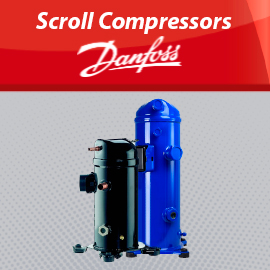
Demystifying Refrigeration Orifices: A Guide for the Curious and the Clueless
Ah, the humble orifice. In the vast and often confusing world of refrigeration, this tiny component plays a crucial role, silently ensuring your ice cream stays firm and your veggies stay crisp. But what exactly are these mysterious orifices, and how do you know which one your fridge needs? Fear not, intrepid reader, for we're about to embark on a journey of icy enlightenment!
What are Refrigeration Orifices?
Imagine a water hose. Now, picture a tiny screw in the middle that controls the flow of water. That, in essence, is an orifice in a refrigeration system. It's a precisely calibrated opening that regulates the flow of refrigerant throughout the system, impacting its pressure and ultimately, its cooling capacity. Different orifices have different sizes, leading to varying degrees of restriction and, consequently, different cooling effects.
Why Different Orifice Sizes?
Refrigeration systems come in all shapes and sizes, from your trusty home fridge to the colossal units keeping supermarket produce chilled. Each system has unique cooling needs, depending on factors like size, insulation level, and the desired temperature range. That's where the different orifice sizes come in. A larger orifice allows for more refrigerant flow, ideal for bigger systems or those requiring rapid cooling. Smaller orifices, conversely, restrict the flow, perfect for smaller systems or those needing to maintain more stable, less-intense cooling.
So, Which Orifice Number Do You Need?
This, my friend, is where things get a tad tricky. Choosing the right orifice size isn't a one-size-fits-all game. It depends heavily on your specific refrigeration system and its unique needs. Generally, manufacturers provide guidelines based on factors like:
-
System type: Is it a home fridge, a walk-in freezer, or something else entirely?
-
Refrigerant type: Different refrigerants have different flow characteristics.
-
Evaporator size: The size of the evaporator coil impacts the required refrigerant flow.
-
Desired cooling capacity: How cold do you need it to be?
Consulting the Pros:
Unless you're a seasoned refrigeration technician, deciphering these factors and choosing the right orifice can be a daunting task. The safest and most reliable option is to consult a qualified professional. They can assess your specific system and recommend the perfect orifice size to ensure optimal performance and prevent costly malfunctions.
Beyond the Basics:
Remember, orifices are just one piece of the complex puzzle that is refrigeration. Understanding their role is a great first step, but it's just the tip of the iceberg. If you're truly fascinated by the frosty world of refrigeration, there's a whole universe of knowledge waiting to be explored! From compressors and condensers to expansion valves and capillary tubes, each component plays a vital role in keeping your world cool and comfortable. So, keep your curiosity piqued, and who knows, you might just become a refrigeration aficionado yourself!
Bonus Tip: Always check your appliance's manual or manufacturer's recommendations for specific orifice size guidance. Don't attempt to DIY unless you're confident in your skills and knowledge. Safety first, remember?


